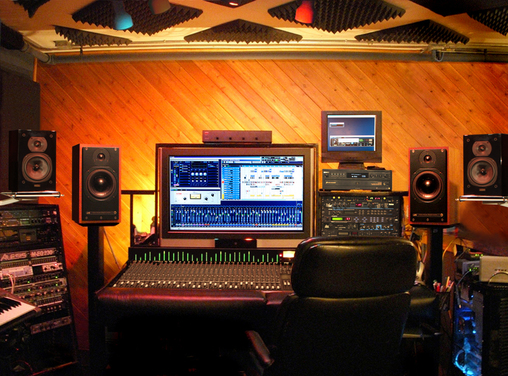Introducing Electronic
Dance Music to Your Life
Electronic
Dance Music, better known as EDM, is becoming one of the mainstream music genre
all around the world. Actually, electronic dance music is considered a genre,
but the reality is that it is a term used to classify all those genres like
house, techno, trance, drum and bass, and others. It mainly focuses on dancing
and it is characterized by being made with synthetic sounds and well-marked and
repetitive rhythms with catchy lyrics, but they aren’t instrumentals at all. Considered
as a whole, electronic dance music is characterized by several defining
features. For example, this music is considered inorganic because the only
sounds of these instruments are generally electronically produced, even when
the sound of other traditional acoustic instruments is imitated. To create
electronic music, the instruments that are used mostly are the synthesizer,
drum machine and sequencer; and this instruments are used to modify or produce
some actual sounds. That’s why EDM is considered as an inorganic music, “It is
sacred to no one race; it has no definitive sound. It is a music for the future
of the human race.” (Butler 32).

EDM is becoming the fastest-growing musical genre. Thanks to many Djs such as Calvin Harris, David Guetta and Skrillex, electronic music's popularity has increased a lot. From festivals to radio airplay, social media and even collaborating with very famous singers and musicians, EDM is getting a lot of attention from all over the world. A study published by Google shows that EDM channel subscribers on YouTube increased 60 percent on smartphones, 77 percent on TVs and 175 percent on gaming devices in 2014. While the majority of the audience is under 25, the fastest growing segment of listeners on the video platform are between the ages of 25 and 34. Interest among 35 to 49 years old also grew 80 percent from January to July 2014. And according to data from Eventbrite and Nielsen, EDM is a $6 billion industry, with festivals making up $4.2 billion.
More than a bunch
of beats that makes us dance for a while, it has been approved that Electronic
Dance Music has health benefits. When we hear music, our bodies release the
neurotransmitter serotonin which raises happiness and a sense of feeling good.
Our bodies also release dopamine, the responsible for helping us feel motivated
and alert. Also, music has the power to release norepinephrine, which is
responsible for concentration, and feelings of elation and euphoria. In
electronic dance music, that’s why genres like Trance, Progressive and Tropical
House make us feel so good. It can help us keep our mind busy by
listening, especially energizing music like Dubstep, Drum & Bass and other
genres.
What EDM
used to be can’t be compared to what it is now, because how it is now is most
important when thinking about the popular culture. Today, famous artists such
as Hardwell, Steve Aoki, and Z-trip are trying to help raise awareness about
the dangers that come along with using rave drugs such as Ecstasy. The EDM
industry is trying to eliminate this act, which brings us to the conclusion
that the youth is being used to sell drugs in these concerts and festivals. The
actual talent aspect also makes up part of the EDM industry’s reputation. It’s
very easy to think that these young DJ’s are simply pressing a play button on a
computer to share bass heavy mixes that were previously recorded. We must not
forget that this is a big part of EDM culture. If someone goes deeper into the
background of EDM, they would find many hard working people who have truly made
their way to the top such as Martin Garrix, a 21 years old Dj who is now the
number 1 Dj in the World (youngest #1). With the increase of younger DJ’s along
with the positive values that they are trying to introduce in their listeners,
we can look at the EDM scene as a solid one.
“EDM is a
phenomenon that shows the toll of technology on our times and captures the
spirit of our generation.” (Kim).
Works Cited
Butler, Mark J. “The History and Creation of Electronic
Dance Music” Unlocking the
Groove: Rhythm, Meter, and Musical Design in Electronic Dance Music,
Indiana University Press, 2006, pp. 32.
Groove: Rhythm, Meter, and Musical Design in Electronic Dance Music,
Indiana University Press, 2006, pp. 32.
Castillo, Michelle. “Electronic Dance Music Goes Mainstream as Older Millennials
Start Listening”. Adweek, January 26, 2015. Web. 13 Oct. 2016
http://www.adweek.com/news/press/electronic-dance-music-goes-mainstream-
older-millennials-start-listening-162549.
Start Listening”. Adweek, January 26, 2015. Web. 13 Oct. 2016
http://www.adweek.com/news/press/electronic-dance-music-goes-mainstream-
older-millennials-start-listening-162549.
Gibson, Nick. “History of Electronic Music: From the
1970s to Today”. Undemy, May
6, 2014. Web. Accesed 12 Oct. 2016 https://blog.udemy.com/history-of-
electronic-music/.
6, 2014. Web. Accesed 12 Oct. 2016 https://blog.udemy.com/history-of-
electronic-music/.
Kim, Deanna. "The 2010s: An Era of Electric
Dance Music." The Bottom Line. October
31, 2012. Web. 20 Accessed Oct. 2016 http://thebottomline.as.ucsb.edu/2012/10/edm-music-
of-our-generation.
31, 2012. Web. 20 Accessed Oct. 2016 http://thebottomline.as.ucsb.edu/2012/10/edm-music-
of-our-generation.
Garritsen, Martijn,
performer. Martin Garrix recap @ EDC
weekend Las Vegas 2015!
#7x7UP. Directed by Mark Loonen. 2015.
#7x7UP. Directed by Mark Loonen. 2015.
No comments:
Post a Comment